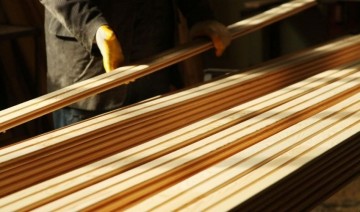
NAHB Seeks Meeting with Commerce Secretary on Soaring Lumber Prices
Amidst a backdrop of record high lumber prices, NAHB is seeking to address supply chain disruptions and tariffs that are contributing to price volatility in the marketplace.
Toward this end, letters were sent last week to Commerce Secretary Wilbur Ross, U.S. Trade Representative Robert Lighthizer and Zoltan van Heyningen, executive director of the U.S. Lumber Coalition.
NAHB is seeking a meeting with Secretary Ross to discuss strategies to ease market concerns for builders and consumers alike. Tariffs on Canadian lumber imports into the U.S. average more than 20% and NAHB is calling on Ross to return to the negotiating table with Canada and redouble efforts to reach a new softwood lumber agreement. NAHB is also requesting the secretary to reach out to domestic lumber producers and urge them to increase lumber production to address shortages that are contributing to soaring prices.
The letter to U.S. Trade Representative Lighthizer carried a similar message: antidumping and countervailing duties currently in place on imported softwood lumber from Canada are aggravating already high lumber prices, and tariffs on other products are also contributing to higher construction costs leading to more expensive housing.
“Today, we reiterate our concerns that the ongoing dispute remains unresolved, leading to further disruptions in the consistent supply and availability of lumber for housing,” NAHB’s letter to Lighthizer stated. “We know there are many pressing trade matters affecting the U.S. economy, but the softwood lumber dispute is one that should not be left on the back burner. Lumber supply, housing affordability, and an industry with the potential to lead the U.S. out of the current pandemic-induced recession should not be ignored. We urge the USTR to work with Canada to develop a workable and long-term solution to a trade dispute that has continued for more than 37 years.”
NAHB’s message to the U.S. Lumber Coalition was a request to work together to address shortages in the lumber supply chain caused in part by the current pandemic.
“Based on current events, increased production would be beneficial in easing supply constraints builders and other lumber consumers are currently facing. Our respective industries are facing challenges during this time and we stand ready to work with you on solutions to improve these circumstances,” the letter said.
Framing Composite Price Tops $600
The Random Lengths Framing Composite Price hit a record $627 per 1,000 board feet for the week ending July 31, marking the first time prices have topped the $600 level. Framing lumber prices have soared 80% since mid-April while the price of oriented strand board hit $550 per 1,000 board feet at the end of July — up a whopping 138% from a year ago.

The primary drivers of the framing lumber and OSB price increases include:
Mills closed in the spring due to stay-at-home and social distancing measures enacted by state and local governments.
When prices fell between March and April as a result of the COVID-19 pandemic, mills projected that housing would be adversely affected and therefore anticipated a large drop in demand. Accordingly, mills that remained operational substantially decreased capacity utilization.
Producers did not anticipate the massive uptick in demand from do-it-yourselfers (DIY) and big box retailers during the pandemic.
Housing weathered the storm much better than most anticipated.
DIY demand has not abated much as states reopen and construction demand has far surpassed lumber mills’ projections.
The recent spike in all northern U.S. and Canadian species has no doubt been exacerbated by the lumber tariffs averaging more than 20% on Canadian imports into the U.S. market.
Original article source from NAHB Now.
